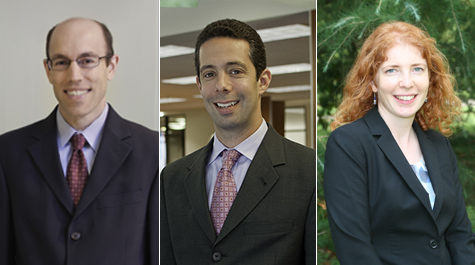Cutting Straight to the (Price) Point: William & Mary Law Faculty Self-Publish Reader-friendly, Inexpensive Casebooks
Professors Jeffrey Bellin, Adam Gershowitz and Sarah R. Wasserman Rajec of William & Mary Law School know that traditional casebooks—the backbone of legal education—are not only huge, dense, note-ridden, and extremely expensive, but they can be backbreaking for students with tight budgets and hours and hours of reading to get through every evening.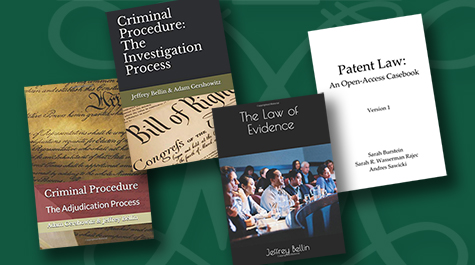
To that end, Bellin, Gershowitz and Rajec have bypassed the usual academic presses and legal publishing houses to publish their own casebooks. The resulting scholarship has brought about clear, concise texts that students are finding useful, engaging and easy on the budget. Recent casebooks include:
- Adam M. Gershowitz and Jeffrey Bellin, Criminal Procedure: The Adjudication Process (656 pages). April 2020. $19. Available at Amazon.
- Jeffrey Bellin, The Law of Evidence (574 pages). July 2020. $17. Available at Amazon.
- Jeffrey Bellin and Adam Gershowitz, Criminal Procedure: The Investigation Process (523 pages). January 2021. $25. Available at Amazon.
- Sarah Burstein, Sarah R. Wasserman Rajec and Andres Sawicki, Patent Law: An Open-Access Casebook Version 1 (708 pages). June 2021. Online, available as an open access publication with Amazon version coming soon.
Going Easy on the Wallet
Bellin, the Mills E. Godwin, Jr., Professor of Law, says he went the self-publishing route because he wanted to offer a high-quality casebook at a low price point—around 10 percent of the price of competing casebooks.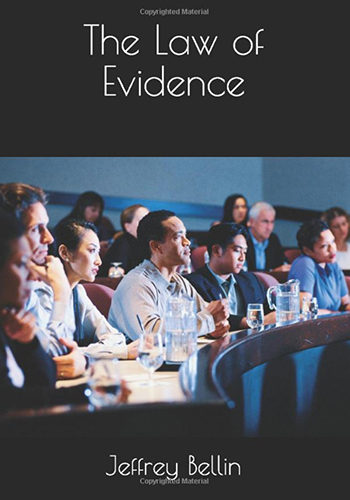
“The focus at first was just to create casebooks for my own students, since I was not happy with the price points of the leading casebooks, and I thought I could match or exceed their quality at a lower price point,” Bellin said. “I also wanted to make sure the casebooks were helping, not hindering the learning process.”
Gershowitz, the Associate Dean for Academic Affairs and R. Hugh and Nolie Haynes Professor of Law, notes that the cost of the leading Criminal Procedure textbooks for each of the subjects he teaches is about $250. Bypassing expensive publishing houses allowed him to make the books available on Amazon at a fraction of the cost.
“More than 150 of our students used the books this past academic year,” Gershowitz said. “The savings to students was more than $34,000 in book costs in just one year.”
Rajec, a Professor of Law, was likewise moved to action by economics. She says that the cost of the leading patent law textbooks are in a range around and above $230. Not so her casebook, which is free.
“My co-authors and I taught from our beta version of the book this year and saved our students more than $18,000 in book costs,” Rajec said. “For the coming year, we will have the free digital version and a low-cost print version on Amazon.”
Coming Straight to the Point
Cost aside, Bellin admits that getting through densely packed traditional casebooks can be a chore, so he tries to make them engaging, timely and clear.
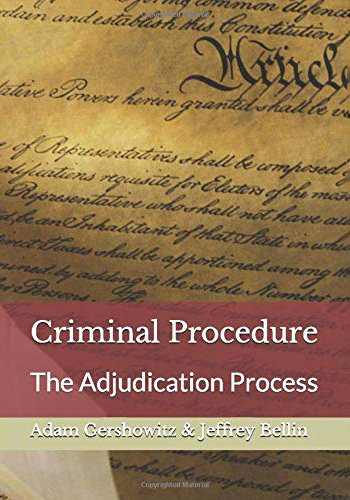 “The material is challenging enough when it is presented clearly,” Bellin said. “The purpose of a casebook, I think, is to help the students learn, not confuse, bore or overwhelm them.”
“The material is challenging enough when it is presented clearly,” Bellin said. “The purpose of a casebook, I think, is to help the students learn, not confuse, bore or overwhelm them.”
Gershowitz notes that most criminal procedure books on the market excerpt major U.S. Supreme Court decisions and contain excessive amounts of notes after the cases. The notes, he feels, often cause more problems than they solve for students.
“Some notes raise obscure cases; other notes discuss hypos that are sometimes unrealistic, and casebook authors tend to add notes to new editions rather than subtract them,” Gershowitz said. “The result is that many textbooks cause problems where students can’t see the forest for the trees and end up more confused than when they started.”
Gershowitz notes that such clutter is the opposite of what law faculty should be encouraging in legal education. “We want future lawyers to understand the big picture of the law,” he said. “We designed our criminal procedure books to show the big picture.”
Opening Access
Rajec’s book, which she co-wrote with Sarah Burstein of the University of Oklahoma College of Law and Andres Sawicki of the University of Miami School of Law, is designed for a 3- or 4-credit class on patent litigation, which most law schools offer. A few different configurations are possible depending on a professor’s focus; and professors teaching other courses, such as an Introduction to Intellectual Property course or a Comparative Patent Law course, can pick and choose from it.
The genesis of the book began in summer, 2020. Rajec says that there were no open access patent law books at that time, but co-author Sarah Burstein tweeted about the need for such.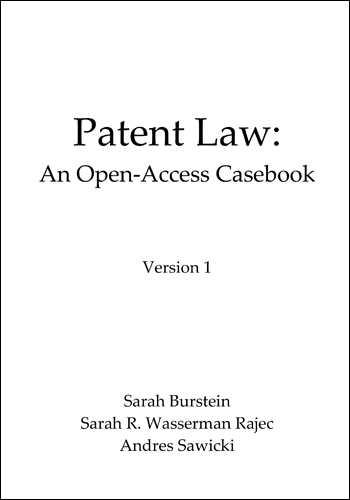
“That got all of us thinking about it, and then meeting and then just diving in,” Rajec said. “We all taught from the book in either alpha or beta forms this past fall and spring. It was a very tight schedule, between writing chapters and reviewing each others’ work, but we were impatient to make it widely available as soon as possible.”
The three authors agreed on a straightforward approach that didn’t complicate things unnecessarily.
“Patent law is a complex subject with doctrinal evolution that reflects changing technologies and business structures, so there is plenty to find confusing,” Rajec said. “But we’ve tried to be clear and write something that explains those uncertainties and gives future practitioners an idea of what is settled and what is likely to face further legal challenges.”
Content aside, Rajec and her co-authors also formatted the book to make it as clear as possible. Footnotes are in line with the main text so that the book can be read on an E-reader, and all images have alt text for the vision impaired or for readers who choose to have their device read the text.
Forging Student Partnerships
Besides benefiting from these casebooks, students also played a part in the publishing process. Bellin’s Fall 2020 Evidence class helped him find typos and suggested improvements in a shared Google doc.
“I was touched that during trying times this past year, my students embraced the project and they are a key part of its success,” Bellin said.
Rajec, too, sings the praises of research assistant Taylor Lain ’21, who had taken her prior patent law class, spent her summer at a law firm and was studying for and taking the patent bar.
“She was completely immersed in patent law,” Rajec said. “It was helpful having a recent patent law student’s perspective, particularly a student who was happy to find recent, relevant cases and otherwise throw herself into the task.”
Bringing in the Verdicts
Not surprisingly, student feedback has been extremely positive. But word is getting out to other schools, too.
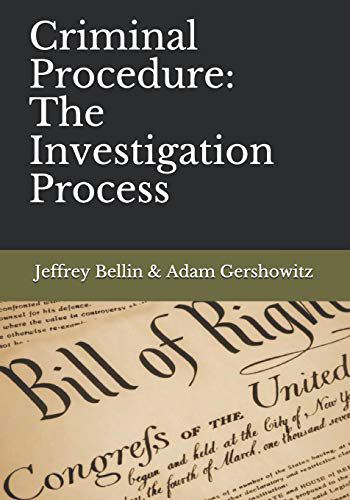 “So far I have only used the books with my own classes, but this summer I wrote a teacher’s manual for the Evidence casebook and sent out an email announcing the book to other Evidence professors,” Bellin said. “The response has been overwhelming.”
“So far I have only used the books with my own classes, but this summer I wrote a teacher’s manual for the Evidence casebook and sent out an email announcing the book to other Evidence professors,” Bellin said. “The response has been overwhelming.”
A review from Everyday Evidence blog sums up the success of Bellin’s Evidence casebook succinctly: “As a former prosecutor and trial judge, the structure of this book is exactly how I believe the rules should be taught so that students can get a deep understanding of the rules without getting lost in the weeds.”
Law faculty at other schools are also showing interest. Rajec says that the intellectual property law community has really been out front trying to make casebooks more accessible for students in innovative ways, including pay what you want, low cost, open access, and open source books.
“As far as our book goes, we’ve had a few colleagues who were willing to teach the beta version of the book in the spring, and gave very helpful feedback and contributions,” Rajec said.
That the book got more than 700 downloads in its first two days out was an added bonus, more than proving the need for casebooks bypassing the usual publishing process.
“I think legal publishers do useful work—after going through the process to think about all the non-research and writing that goes into a casebook, I very much appreciate the role of a publisher,” Rajec said. “But I’m not sure they can justify the ever-growing prices when there are so many other options out there, now. I also happen to think our book competes well on its own merits.”
About William & Mary Law School
Thomas Jefferson founded William & Mary Law School in 1779 to train leaders for the new nation. Now in its third century, America’s first law school continues its historic mission of educating citizen lawyers who are prepared both to lead and to serve.
